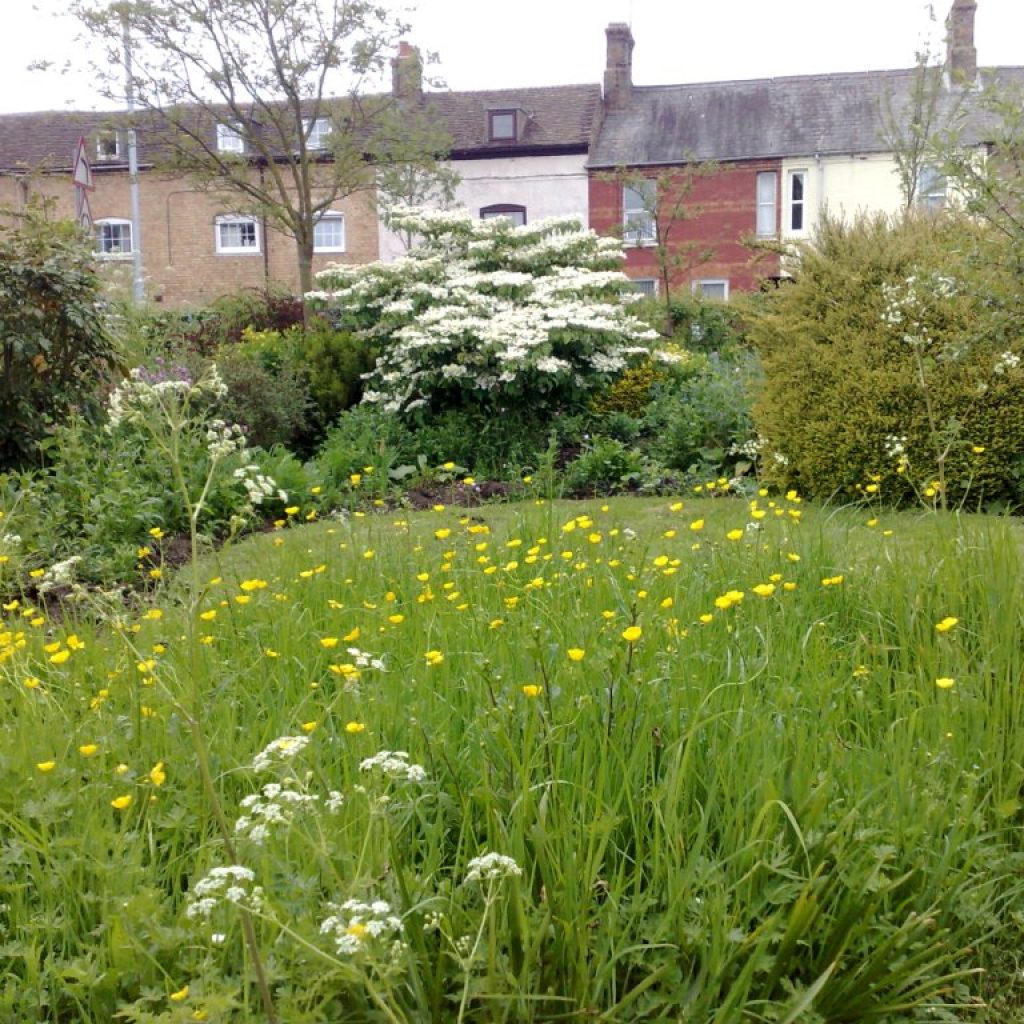How to Plant a Mini Meadow in Your Garden Landscape
Gardening is most satisfying when you eschew monotony and routine for a little fun and experimentation. I see gardens like a painter’s canvas – you can fill it with anything you can imagine, and shape your ideas into something bold, unexpected and inspiring.
So today, I’m going to present you with an odd yet worthwhile gardening project – planting a mini-meadow.
Brow-raising? Weird?
It surely is. However, there are some great reasons to plant a mini-meadow in your garden and there are many gardeners who incorporate this landscape design feature successfully.
Benefits/Purpose of a Mini-Meadow
A mini-meadow in your garden can have some advantages you may have long been looking for. These collections of different small species and plant communities can contribute to both the health and appearance of the garden in a positive fashion, and I recommend that every serious gardener consider planting one (if you’re not a control freak). Why?
Increase Biodiversity
Most gardens strive for uniformity, both in terms of design and plant species.
Naturally, this limits the number of plant species you can incorporate in your garden and can make the landscape look a bit one dimensional. A mini-meadow can introduce dozens of plant species in a compact space in ways that a typical garden won’t.
Attract Wildlife
A mini-meadow that contains a biodiverse mix of plants, will naturally attract a mix of animal life. The right combination of annuals and perennials will attract the likes of hummingbirds and butterflies, among other species. Also, some of these plants will serve as food sources since they offer nectar, while others will provide shelter.
Aesthetic Powerhouse
An added benefit of increased biodiversity is a more aesthetically pleasing garden. A more varied bed of plants can add a burst of color that traditional garden arrangements will not.
Even the animals these plants attract will beautify your garden with their colors and delicate movements.
Room to Experiment
Here’s another important benefit of mini-meadows and perhaps, my favorite one – they give you room to experiment with your gardening.
For example, you might want to try adding a particular plant to your garden, but you’re not sure how well it will do in your garden or how it will look. A mini-meadow gives you a secluded spot for you to try your experiment. If it works out, you can add that plant more throughout your garden. If it doesn’t work, no big deal – go for other choices.
How to Plant a Mini-Meadow
Now for the main event – planting your mini meadow. The principles of traditional gardening apply albeit with a few differences here and there. With that said, I’ll share the essential tips to help your plant and grow your mini meadow with both precision and randomness.
Sowing the Seeds for a Flourishing Mini Meadow
- Choose and prepare your area – This is the most crucial step because the success of your mini meadow will flourish or fail depending on the area you choose. The ideal spot will be clear of competing plants. Or, be one where competing plants will lose the battle with your more desired species. Ultimately, you want to unearth any lingering vegetation by digging up weeds. Also, avoid other debris that can compete with the seeds you plant.
- Select the Right Mix of Seeds – Whatever plants you intend to add to your garden, make sure that your seed mix is viable. Bargain or discount mixes may contain as little as 10-15% desired species seed. Either way, you can find the details on the packaging.
- Choose Your Seeds/Purpose – There are many ways to style and plant a mini meadow. Not to mention, different purposes. For example, you might decide that you want to focus on color or attracting pollinators. Depending on your intent, you will have to choose seeds that will allow you to reach those goals.
- Distribute Your Seed Wisely – Make sure to distribute your seeds so that they make good contact with the soil. If anything, you can lightly tamp the seed into the surface with your foot. For more even distribution, you can divide the seeds in half, spreading half walking north to south. Then, spreading the other half walking east to west. If it’s a very fine seed you’re spreading you may need to mix it with a bit of sand to help it carry.
So far I’ve put a lot of emphasis on seeds. You may also consider digging and dividing some of your existing native perennial plants and using some of these in your mini-meadow to jump-start things (see last photo of mine with native goldenrod and Joe Pye weed).
- Add Water to Your Meadow – For your seeds to germinate, they will require moisture. You can look out for the weather forecast and seed your chosen area right before it rains. Or, you can sprinkle some water on it. You should also keep the bed damp until you see sprouts. This means gently watering it once or twice a day if you’re experiencing a dry time.
- Look out for Seedlings – The amount of time it takes for seedlings to sprout will vary depending on the mix you choose. However, when you see the first sprouts, make sure to lightly water the area until they grow to be six inches tall. Once they reach this height, you’ll only have to water them during extended periods of dry spells. Keep in mind that seedlings will flower at different rates. So know ahead of time when your chosen plants will bloom.
Beware of seed mixes that are heavy with annual species. As a rule, you should strive for plants that are long-lived and deep-rooted. Many of these take a longer period to take hold.
Ideally, you’ll have a mix of both annual species which are showy in one season but don’t return the following year (they CAN produce and disperse seed for new plants though) and perennial species.
- Maintain Your Mini-Meadow – Once your mini-meadow has started to bloom, it’s just a matter of maintaining it. You will need to do some watering and fertilizing (which depends on the type of seeds you have chosen), but in most cases, not a lot. However, you will likely have to keep the meadow cut at least once a year. Other than that, you should be able to sit back and watch your mini meadow take on a life of its own as it grows.
The Many Merits of a Mini-Meadow in Your Garden
For many of you, a mini-meadow in your garden may very well be one of the best ideas you invest in. It will allow you to introduce plant species that you might be skeptical of adding in your garden as it is, with little risk and not too much cash. Think of it as your testing grounds.
Are you interested in growing a mini meadow in your garden? Get in touch with me for a consultation. I recently planted a mini meadow (below) in my own garden and I’m pleasantly surprised by the positive comments I’ve received from neighbors. Stay tuned.







